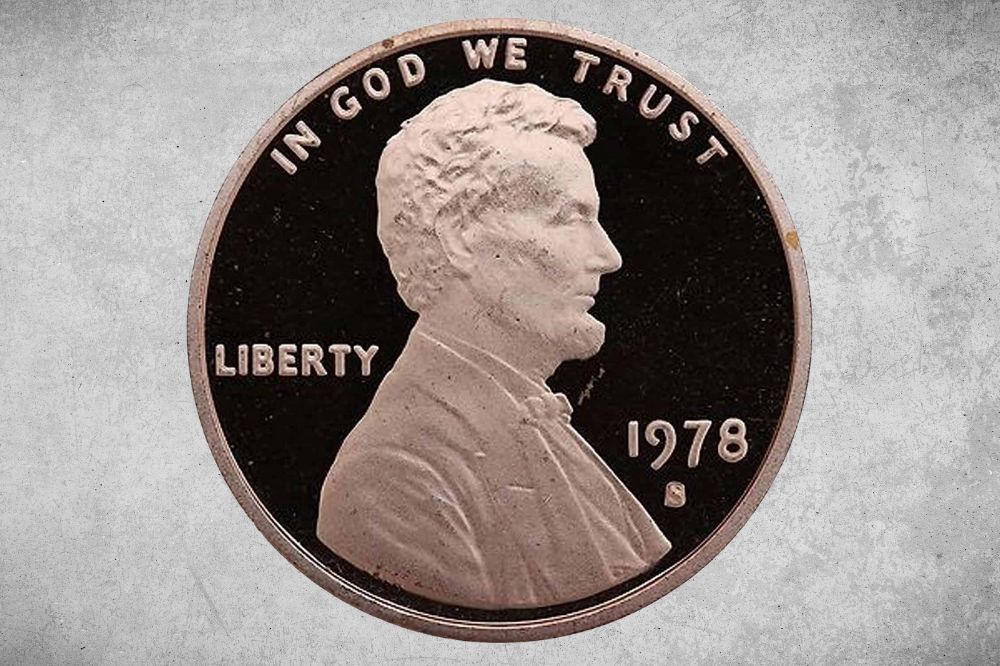The Lincoln penny is one of the most recognizable coin series in the world. Chances are, you have a few in your pockets right now.
Celebrating the 16th president of America, this series of pennies, including the relatively recent 1978 penny, have proven to be quite popular with collectors interested in unusual, unique, pristine conditioned coins.
Although the penny is the lowest-valued coin on the market, it has the potential to be truly priceless. This article will explore everything that determines whether the 1978 penny you have is worth much more than just a single cent.
1978 Penny Details
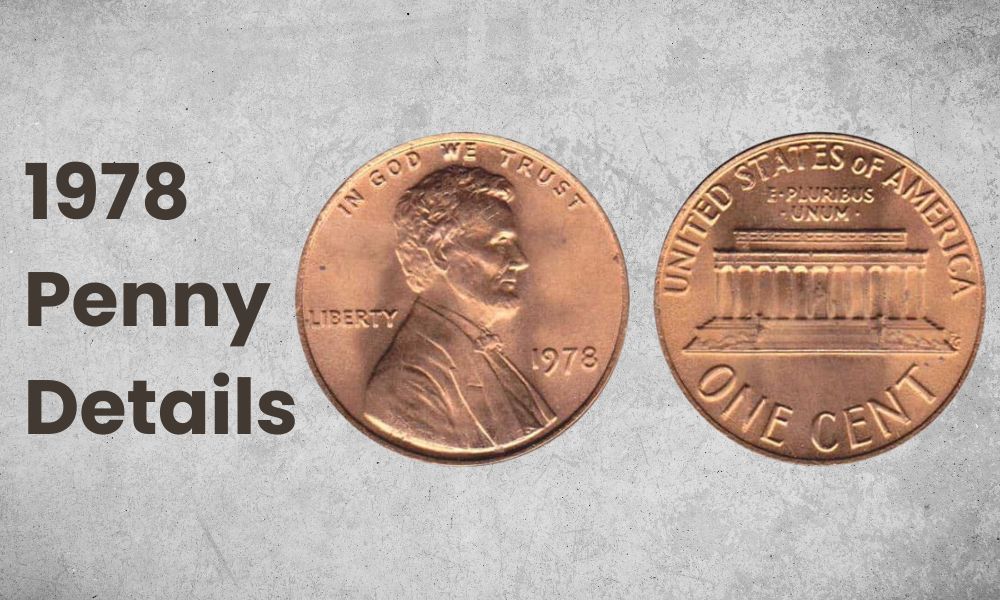
- Category: Lincoln Penny
- Mints: Philadelphia, Denver, San Francisco
- Total Mintage: Over9,784,347,185
- Obverse designer: Victor David Brenner
- Reverse designer: Frank Gasparro
- Edge: Plain, smooth
- Diameter: 19 mm
- Thickness: 52 mm
- Composition: Copper (95%), Zinc (5%)
- Weight: 11 grams
- Face Value: $0.01
The 1978 penny, also known as the 1978 Lincoln Memorial Cent, is part of one of America’s most influential coin series dating back to 1909.
The obverse side features 16th president Abraham Lincoln, designed by Victor David Brenner, which has remained unchanged since its first edition. It shows a side portrait of a beardless Lincoln, with the motto ‘In God We Trust’ and ‘Liberty’ surrounding him.
The 1978 penny features a redesigned reverse, debuting in 1959 to celebrate Lincoln’s 150th anniversary. It also featured the Latin phrase ‘E Pluribus Unum,’ which translates as “Out of Many, One.”
Because of its low face value, the penny has a smooth, plain edge that requires no further detail or work to create. Coins would be wrapped in a collar to shape them, allowing for quick and easy mass production.
One of the most prominent features of the 1978 penny is because of events shortly after its creation. Because of rising inflation, the price of copper skyrocketed in 1982, and the US mint wanted to use zinc and an outer layer of copper to make pennies more affordable to produce. As such, the 1978 penny is one of the last iterations of copper-based pennies produced in America.
Because of their copper composition, 1978 pennies are pretty heavy at 3.11 grams, almost a gram heavier than copper-plated zinc, which weighs only 2.5 grams. That said, their thickness and diameter remain unchanged from other types of Lincoln penny.
Finally, as was familiar with all Lincoln pennies, these coins were mass-produced in their millions to keep up with the growing US economy. Production centered around three prime locations; Denver, San Francisco, and Philadelphia. As such, their value is somewhat low – as coins are commonly found even in today’s market.
That said, several penny faults have led 1978 pennies to become incredibly valuable in the eyes of a collector. And in some rare instances, high-quality pennies have been known to sell for thousands of dollars in private auctions.
Value chart
| 1978 Penny Value Chart | ||||
| Mint Mark | Good | Fine | Extremely Fine | Uncirculated |
| 1978 No Mint Mark Penny | $0.01 | $0.01 | $0.01 | $1.16 |
| 1978 D Penny | $0.01 | $0.01 | $0.01 | $1.16 |
| 1978 S Penny | $0.01 | $0.01 | $0.01 | $2.88 |
Because of high production numbers, the 1978 penny is considered incredibly common, even in today’s market. They are usually only worth their face value, even in great condition.
Below is a short explanation of the four common grades and their criteria:
- Good is when the coin’s design is outlined but missing key details. There may be signs of wear and tear
- Fine – this is when coins have few visible details, some of which may be worn away.
- Extremely fine – the coin has only light wear over high points. There may be signs of mint luster (sheen).
- Uncirculated means that the coin presumably never went into public circulation and is in extremely good, if not pristine, condition. There are only trace amounts of use, with medium to full luster.
Also Read: Top 20 Most Valuable Old Pennies Worth Money (Penny Collection)
1978 Penny Value and Varieties Guides
Below are the three variations of 1978 pennies:
1978 No Mint Penny value
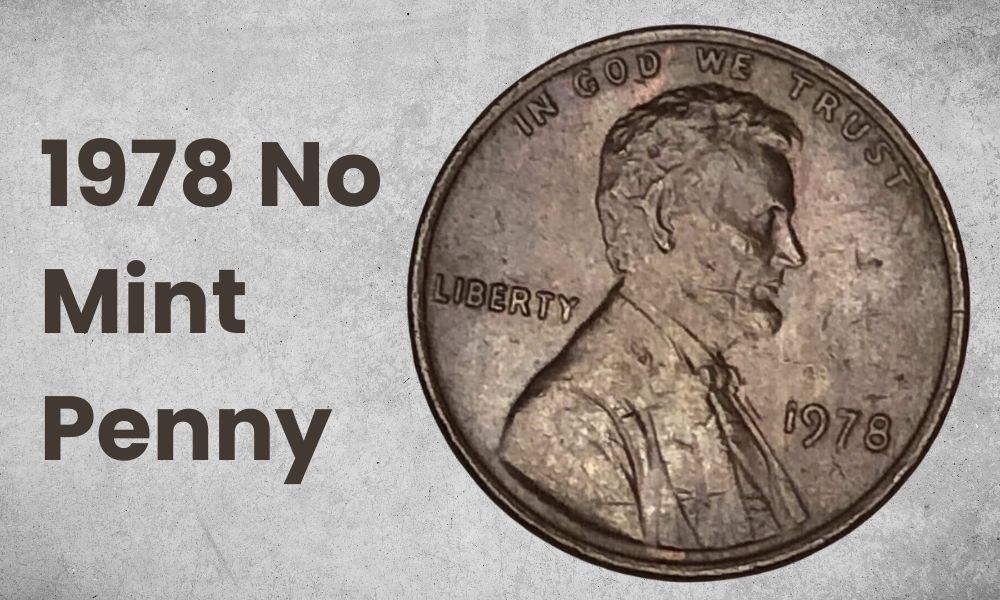
- Type: Lincoln Penny
- Edge: Plain
- Mint mark: No mint mark
- Place of minting: Philadelphia
- Year of minting: 1978
- Face value: $0.01
- $ Price: $0.01 – $1.16
- Quantity produced: Over 5,558,605,000
- Designer: Victor David Brenner & Frank Gasparro
- Composition: Copper (95%), Zinc & Tin (5%)
- Mass: 11 grams
Philadelphia minted the most 1978 lincoln pennies, at a staggering 5,558,605,000. These coins are easy to identify as they will have no mint mark placed on them.
Because of this high production, the no mint 1978 penny is considered low value and is only worth face value in most cases. That said, uncirculated pennies have often sold for modest amounts of about $1.16.
Some 1978 no-mint pennies, like this penny coin, have been known to sell in the thousands for $4,259.38. Its high value is because of its impeccable condition, luster, and sharp strike definition.
1978 D Penny value
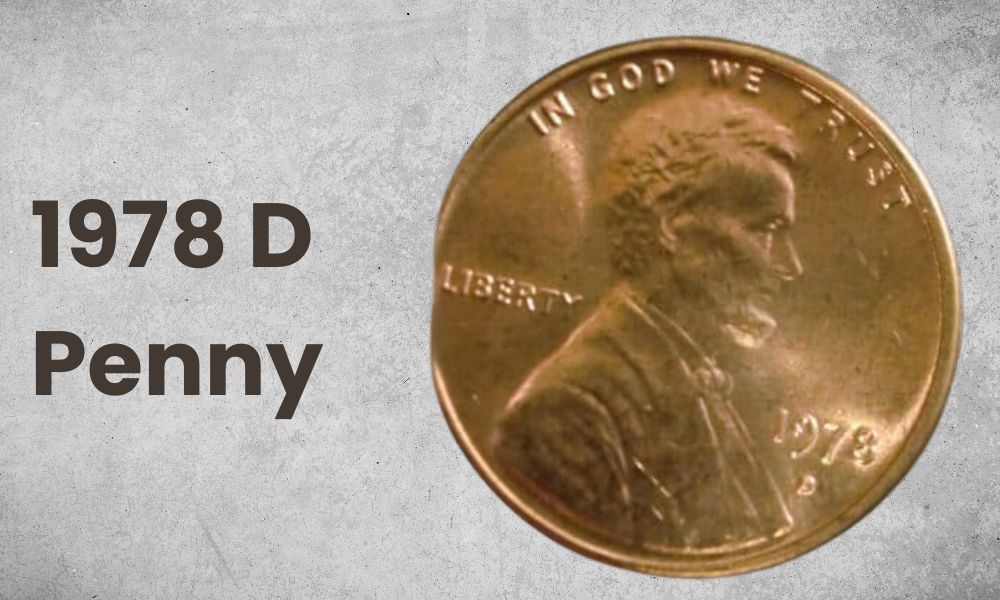
- Type: Lincoln Penny
- Edge: Plain
- Mint mark: No mint mark
- Place of minting: Denver
- Year of minting: 1978
- Face value: $0.01
- $ Price: $0.01 – $1.16
- Quantity produced: Over 4,280,233,400
- Designer: Victor David Brenner & Frank Gasparro
- Composition: Copper (95%), Zinc & Tin (5%)
- Mass: 11 grams
With over 4 billion coins produced, Denver’s 1978 pennies are incredibly widespread across America and, in most instances, won’t be worth more than their face value of 1c.
You can easily identify these coins by their signature ‘D’ mint mark on the reverse side. Prices range from 1c to $1.16 for an uncirculated quality coin.
That said, because it has a Denver mark, it may have some additional value to collectors from this area. Some rare 1978 D coins with high luster and detailing have sold for up to $546 at auction.
1978 S Penny Value
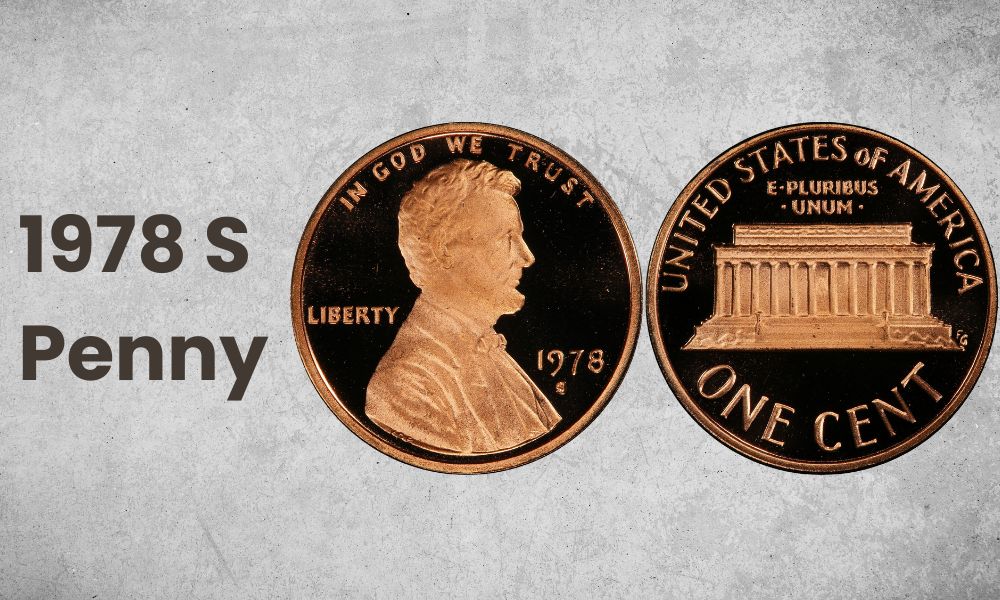
- Type: Lincoln Penny
- Edge: Plain
- Mint mark: No mint mark
- Place of minting: San Francisco
- Year of minting: 1978
- Face value: $0.01
- $ Price: $0.01 – $2.88
- Quantity produced: Over 3,127,781
- Designer: Victor David Brenner & Frank Gasparro
- Composition: Copper (95%), Zinc & Tin (5%)
- Mass: 11 grams
The last variety of 1978 lincoln pennies is the S penny. Made in San Francisco, these coins will have a signature ‘S’ mint mark, making them easy to identify.
Over 3,127,781 pennies were minted in 1978. While this is still quite a big number, it is nothing compared to the billions produced in Philadelphia and Denver. As such, 1978 S pennies are generally considered more valuable, less common, and can sell more in most cases.
An uncirculated S coin can sell for an average of $2.88. Some of the highest-selling 1978 pennies are all from San Francisco, like this coin which sold for an impressive $4,313.00 in 2008.
1978 Penny History
Despite its low value, the penny has been the cornerstone of American commerce since its creation in 1793. The Lincoln series, which dates back to the early 1900s, is arguably the country’s most widespread and consistent coin.
True to its name, the coin features the 16th president, Abraham Lincoln, on its top side. Victor David Brenner designed this design on the first mint of the coin in 1909. It shows a profile view of Lincoln with the words ‘Liberty’ and ‘In God We Trust’ surrounding him. Despite many changes in production, this design has remained unchanged.
In contrast, the back of the penny has undergone considerable redesigns, with the original ‘Wheat’ design replaced in 1959. The Lincoln memorial design by Frank Gasparro was chosen as the replacement, a style that all 1978 pennies have.
Although the 1978 penny may seem generic, it has immense historical significance. The rise of inflation in 1982 meant that copper was deemed too expensive to create low-value currency.
As such, the US Mint changed the chemical composition of Lincoln pennies from mostly copper to copper-plated zinc. For this reason, 1978 pennies are some of the last copper-based coins produced in America.
Over 9 billion 1978 Lincoln pennies were minted, mainly in Denver and Philadelphia. This is one of the highest numbers of coins produced in a year, which can make the penny quite widespread, and relatively low in value.
As one of the most mass-produced coins in history, it’s safe to say that there will always be 1978 pennies in circulation. Chances are you have some in your wallet right now.
But you must remember that, like any collectible, some coins buck the trend. Some high-quality 1978 pennies have been known to sell for thousands of dollars at auction. Some varieties, like the San Francisco mint, are uncommon and can sell for a premium with the right dealer. Don’t discard your pennies just yet – you never know if they’re worth a small fortune.
1978 Penny Grading
Like all collectibles,s coins follow a strict industry grading system to help, collectors value their coins and appraise potential buys. Below is a good video on how to work out if your 1978 penny is worth something:
List of 1978 Penny Errors
One of the most significant factors that can help increase a 1978 penny’s value is if it has an error, fault, or defect. Below are some of the most common ones to find:
1. 1978 “BIE” Penny error
A signature error to Lincoln pennies, the BIE error is when the die frequently broke between the letters B and E in the word Liberty. This break often left a noticeable scar on the coin, which resembles the letter “I.”
Depending on the BIE error’s size, depth, and direction, your coin’s value can increase to a modest sum of between $5 to $20.
2. 1978 Double Die Pennies
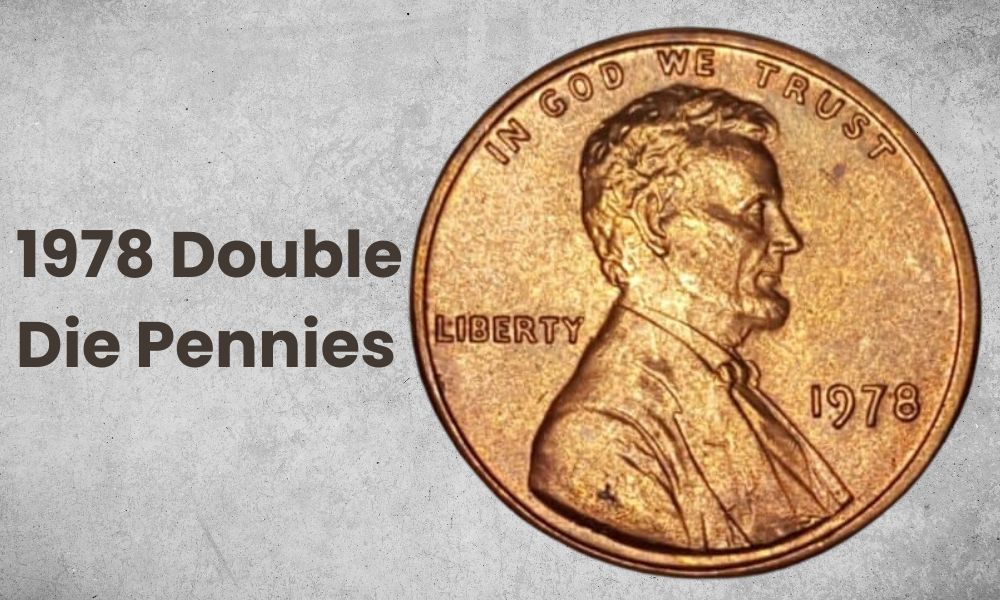
A double died penny is when two designs are imprinted on the same coin. This can be a result of misalignment during striking. This error can vary in 1978 pennies, from slight and isolated double imprints (e.g., just on the lettering) to extreme distortions affecting the entire coin’s surface.
As such, the bigger and worse the error, the more valuable the coin becomes. Some have been known to sell for as high as $80 or more.
3. 1978 Penny on the wrong planchet
A wrong planchet error occurred when the Lincoln penny design was not stamped on the correct-sized penny coin and instead struck on dimes or nickels. Although many initially think this fault makes the penny worthless, the opposite is true.
Not only can this mistake affect the shape, weight, and appearance of the coin, but its value too. For example, a 1978 penny cast on the wrong planchet sold at auction for upwards of $176.25 in 2014.
4. 1978 Penny with Off-Center Errors
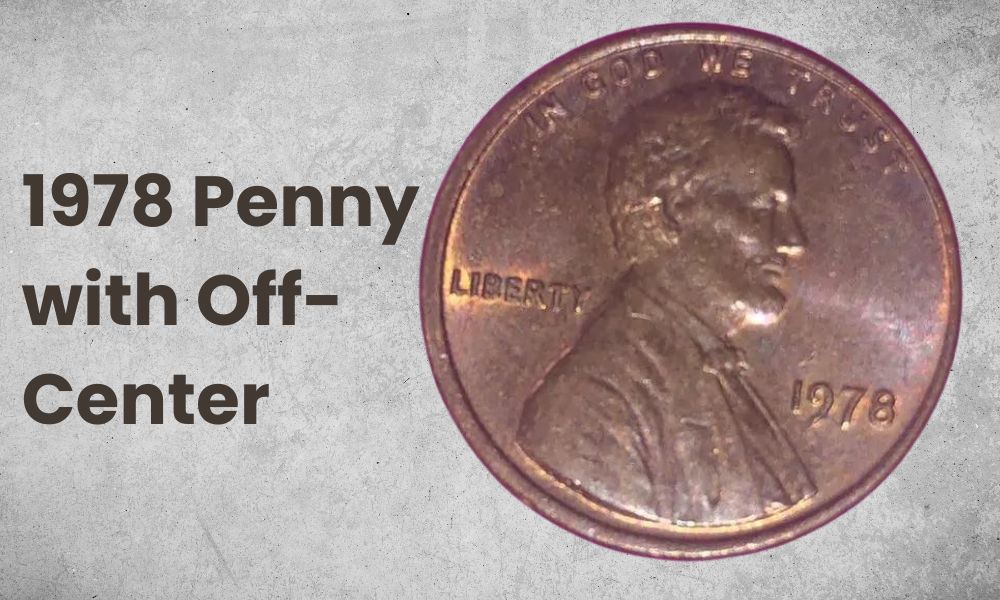
Another standard error across all coin production was when the printed image was misaligned or off-center. The coin would then have some or part of Abraham Lincoln at an angle or cut off. Like previous errors, the value increase would depend on the severity of the misalignment. Off-center pennies usually sell on auction websites for around $2-3 per penny.
1978 Penny Value FAQ
What makes a 19791 penny rare?
Like most pennies in the Lincon series, the coins aren’t worth more than their face value unless they meet exceptional criteria. These include unusual errors and faults, like a BIE crack or double-die print.
Which 1978 variation is worth the most?
Although the coin’s quality and condition often dictate its value, 1978 pennies minted in San Francisco are often more desirable at auction. This is because of the relatively low production number in that year.
What makes the 1978 penny so unique?
Because the cost of copper rose considerably in the 80s, the US mint changed pennies from copper-bassed to copper-plated zinc. As such, the 1978 coin is one of the last editions to be primary copper.
